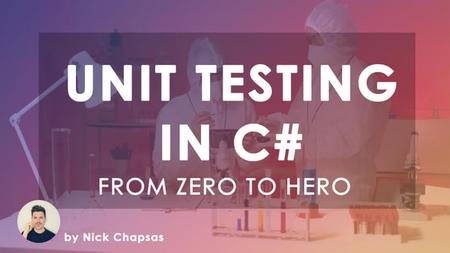English | MP4 | AVC 1920×1080 | AAC 44KHz 2ch | 60 Lessons (5h 39m) | 961 MB
Mastering the bedrock of testing
There is a reason why Unit Testing is the bottom layer in the testing pyramid. You can only build a solid testing suite on a robust foundation. Nothing is more reassuring when working on a codebase than knowing that if you accidentally break something, a test will alert you, saving you hundreds to thousands or even hundreds of thousands of dollars in potential customer impact. In this course, Nick will teach you how to write modern unit tests for your code bases so you are always confident in change. Oh, and if you don’t know what the testing pyramid is, don’t worry. You will after you take this course.
Table of Contents
1 Welcome
2 What will you learn in this course_
3 Who is this course for and prerequisites
4 Different types of testing
5 What is unit testing and why it’s important_
6 The testing pyramid
7 Why should you write unit tests_
8 The 3 core unit testing concepts
9 Why xUnit_
10 Writing your first unit test
11 Structuring your solution
12 Naming in unit tests
13 Arrange, Act, Assert
14 xUnit’s test execution model
15 Test Setup and Teardown
16 Parameterizing tests
17 Ignoring tests
18 Your turn to practice (Project source under the video)
19 My answer to the exercise
20 Section recap
21 Writing fluent assertions
22 Testing strings
23 Testing numbers
24 Testing dates
25 Testing objects
26 Testing enumerables
27 Testing methods that throw Exceptions
28 Testing for raised events
29 Testing private methods (members)
30 Testing internal methods (members)
31 Section recap
32 The problem with dependencies
33 Dependency injection to the rescue
34 What are fakes_
35 What is mocking_
36 Moq vs NSubstitute
37 Section recap
38 The project we will be adding unit tests to
39 The scope of our testing
40 Testing the application layer
41 Exercise Testing the rest of the application layer (Project source under the video)
42 Exercise answer Testing the rest of the application layer
43 But was all that necessary_
44 Testing the data layer
45 Testing the API layer
46 Exercise Testing the rest of the API layer (Project source under the video)
47 Exercise answer Testing the rest of the API layer
48 Section recap
49 Observing the default test execution behavior
50 The Class Fixture
51 The Collection Fixture
52 Running test in parallel
53 Advanced parameterization
54 Setting test execution timeouts
55 Testing Date and Time
56 Continuous testing
57 What is code coverage_
58 Measuring code coverage
59 Section recap
60 Course conclusion
Resolve the captcha to access the links!
